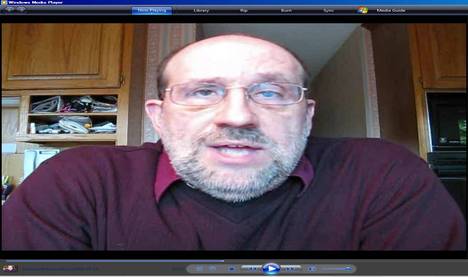I found the passage quoted below to be especially illuminating on how rapid mutation helps explain why the flu virus is so successful and dangerous. (An additional important factor is that the virus can survive in birds, without killing them.)
It occurs to me that something akin to rapid mutation (e.g., rapid experimentation) has also been advocated as a way to quickly advance science (Karl Popper), or enterprise (George Gilder).
(p. 105) Whenever an organism reproduces, its genes try to make exact copies of themselves. But sometimes mistakes–mutations–occur in this process.
This is true whether the genes belong to people, plants, or viruses. The more advanced the organism, however, the more mechanisms exist to prevent mutations. A person mutates at a much slower rate than bacteria, bacteria mutates at a much slower rate than a virus–and a DNA virus mutates at a much slower rate than an RNA virus.
DNA has a kind of built-in proofreading mechanism to cut down on copying mistakes. RNA has no proofreading mechanism whatsoever, no way to protect against mutation. So viruses that use RNA to carry their genetic information mutate much faster–from 10,000 to 1 million times faster–than any DNA virus.
Different RNA viruses mutate at different rates as well. A few mutate so rapidly that virologists consider them not so much a population of copies of the same virus as what they call a “quasi species” or a “mutant swarm.”
These mutant swarms contain trillions and trillions of closely related but different viruses. Even the viruses produced from a single cell will include many different versions of themselves, and the swarm as a whole will routinely contain almost every possible permutation of its genetic code.
Most of these mutations interfere with the functioning of the virus and will either destroy the virus outright or destroy its ability to infect. But other mutations, sometimes in a single base, a single letter, in its genetic code will allow the virus to adapt rapidly to a new situation. It is this adaptability that explains why these quasi species, these mutant swarms, can move rapidly back and forth between different environments and also develop extraordinarily rapid drug resistance. As one investigator has observed, the rapid mutation “confers a certain randomness to the disease processes that accompany RNA [viral] infections.”
Influenza is an RNA virus. So is HIV and the coronavirus. And of all RNA viruses, influenza and HIV are among those that mutate the fastest. The influenza virus mutates so fast that 99 percent of the 100,000 to 1 million new viruses that burst out of a cell in the reproduction process (p. 106) are too defective to infect another cell and reproduce again. But that still leaves between 1,000 and 10,000 viruses that can infect another cell.
Both influenza and HIV fit the concept of a quasi species, of a mutant swarm. In both, a drug-resistant mutation can emerge within days. And the influenza virus reproduces rapidly–far faster than HIV. Therefore it adapts rapidly as well, often too rapidly for the immune system to respond.
Source:
Barry, John M. The Great Influenza: The Story of the Deadliest Pandemic in History. Revised ed. New York: Penguin Books, 2005.
(Note: italics in original.)






